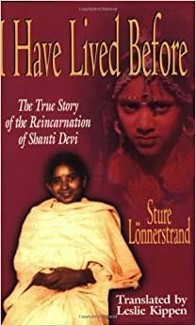Talk:Past Life Memories or Spontaneous Recall (‘Jātismara’)
By Vishal Agarwal
The concept of rebirth is is affirmed across multiple scriptural, historical, and anecdotal sources.
Krishna said: Numerous are my lives that have passed, and so also yours, Arjuna. I know them all, but you do not know them, Scorcher of foes. Gita 4.5
This verse underscores the idea that the Atma undergoes multiple cycles of birth and death, retaining its continuity across different existences, even though the recollection of these past lives remains veiled for most individuals. Throughout, there are numerous documented instances where enlightened beings and Swamis' have recalled their past lives with clarity.
Several prominent figures within the Dharmic traditions have described memories of their previous incarnations. A verse attributed to Sant Kabir suggests that in his past life, he was a Brahmana who engaged in immoral deeds and neglected the worship of Bhagavān Rama, which resulted in his rebirth in a Muslim weaver’s household. Similarly, Guru Gobind Singh, in his autobiographical work Bachittar Nāṭak, recounts that in a previous birth, he had performed intense austerities in devotion to Mahādeva (Shiva) and Mahākālikā. As a consequence, Hari commanded him to be reborn and establish the flourishing Khālsā Panth.[1]
These narratives align with the broader belief that spiritually evolved individuals, through tapas (austerities) and bhakti (devotion), may retain or regain awareness of their past existences.
Beyond scriptural and historical references, there is an extensive body of literature documenting hundreds of cases where individuals have recalled details of their past lives.[[2][3][4][5][6]. Many of these accounts exhibit remarkable consistency in descriptions of past events, places, and relationships, further reinforcing the belief in rebirth.
One of the most widely studied and publicly discussed cases of past-life recall is that of Shanti Devi, whose experiences drew considerable attention in the 20th century.
Shanti Devi:
A particularly notable case of past-life recall is that of Shanti Devi, a girl born in Delhi in the 1920s. From an early age, she exhibited an unusual conviction that she had lived a previous life as a Brahmana woman in Mathura. Despite being born into a family with no Brahmin lineage, she consistently asserted that she had a husband and son in Mathura.
Shanti Devi provided vivid descriptions of her previous home, claiming that it had a yellow exterior, and often conversed with her present family in a dialect commonly spoken in Mathura. Her persistent statements attracted widespread attention, ultimately leading Mahatma Gandhi to commission an investigative committee to assess her claims.
When taken to Mathura, Shanti Devi accurately recognized her past-life family members and correctly identified locations associated with her former life. She pointed to a spot where a well had once existed (which had since been sealed), revealed the location where her past-life family had hidden money, and recalled intricate personal details regarding her previous husband.
Her case was extensively studied by a Swedish researcher, who later published a detailed analysis of her story.[7]
One of the most remarkable aspects of Shanti Devi’s account was her description of conscious awareness during the transition between lives. She narrated how her Atma left her body just before cremation and retained consciousness of her surroundings due to her lifelong practice of chanting Krishna’s name with devotion.
Her descriptions of the intermediate state between lives align with eschatological concepts that suggest the Atma, depending on its karma and spiritual inclination, may retain various degrees of awareness before taking its next birth. She recounted experiences in the antarābhava (intermediate state) and her subsequent rebirth in her present family.
Despite her reincarnation, Shanti Devi struggled with attachments from her past life. She never married, citing that her past-life husband was still alive, even though he had remarried after her previous demise. She dedicated her life to teaching spiritual principles and affirming the doctrine of rebirth, sharing her insights with audiences in Delhi until her passing around the age of 60.
References[edit]
- ↑ "Paraloka aura Punarjanma." Kalyāṇ, special issue, vol. 43, no. 1, 1969, Geeta Press, Gorakhpur, pp. 73, 230-231. Discusses cases where leaders, such as Vinoba Bhave, made guesses about their past lives based on habits and circumstances.
- ↑ "Paraloka aura Punarjanma." Kalyāṇ, special issue, vol. 43, no. 1, 1969, Geeta Press, Gorakhpur.
- ↑ Swaminarayan Sampradaya. Relevant publications from Swaminarayan Aksharapith, Ahmedabad.
- ↑ Swami Rama. In Woods of God-Realization. Various editions, Rama Tirtha Pratishthan, Lucknow, India.
- ↑ Stevenson, Ian. Cases of Reincarnation Type. 4 vols., University Press of Virginia, 1974-1983.
- ↑ Kharel, Mohan. Past Life Recollection, OBE, NDE, and Other Parapsychic Phenomena in Nepal. Self-published, 2014.
- ↑ Lönnerstrand, Sture. I Have Lived Before: The True Story of the Reincarnation of Shanti Devi. Zark Mountain Publishers, 1994, Huntsville, Arizona (USA).

